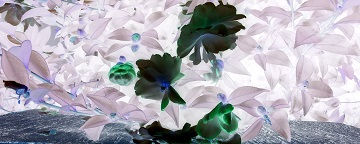Capturing Nature Review
- Marie Dustmann
- Jul 23, 2019
- 4 min read
Updated: Jul 30, 2019

It takes me a while to realise I’ve started viewing the Capturing Nature exhibition at the Australian Museum from the end, rather than from the beginning. I’m heading clockwise, when I should have headed anti-clockwise. By the time I do realise this, I’ve seen quite a bit of the exhibition and I’m committed to the direction I’m heading in.
The exhibition features photography from the Australian Museum’s collection taken between 1857 to 1893 of fauna collected by the Museum and the people who did the collecting. Spoilages and impurities from the photographic development process are captured in many of the prints, adding to the sense of history in the images.
The first exhibits I see are the pages of the Museum’s photographic albums, which have now become museum pieces themselves, sepia coloured and crumbling on the edges as if subjected to the slow fire of time. Albums were dedicated to each zoological collection held by the Museum and became a valuable resource for study around the world.
The exhibit explains the nineteenth century view that animals existed for human exploitation and how this view gradually changed. Some of the animals donated to the Museum died naturally, but others were deliberately killed for the purposes of study.
I pass displays of birds and animals, stuffed and posed as if still living. Taxidermy tableaus were popular for home décor, consisting of animals inserted as realistically as possible in ‘natural habitats.’

The Victorian curator, Gerard Krefft, poses in situ beside a once-living manta ray, now a sad carcass in a sandstone flagged courtyard. Krefft assumed the marsupial lion was a herbivore based on its teeth. He turned out to be wrong.
A crucified turtle is spread on a double-armed cross, held up by a museum employee. Another man stands to the side, wearing an apron as if to protect his clothes from butchery.
Photos show pygmy sperm whale skulls, possum skulls, wallaby skulls and thylacine skulls arranged in patterns to form artistic, but disturbing displays.
Elegant sculptural skeletons of animals are positioned in front of artificial backdrops, poles and plinths visible, the behind the scenes tricks exposed, while simultaneously creating the impression that these bones are about to walk straight out of their frames.
I come across a photo of a huge fish like a giant deflated balloon hanging from a gibbet-like gantry. Its bowler-hatted captor stands beside his catch. It’s a sunfish, a type of fish I’ve never heard of before. Four of them came too close to shore in the summer of 1882 and were killed. I can’t help wishing they’d escaped to live out their natural lives. Online photos of sunfish reveal them to have almost anthropomorphic features, like human-faced fish, something the museum photos have failed to capture.
A young boy cries out to his friends and to his mother, ‘Come on, this is boring.’
I hear another woman commenting to her friends and the children they are with, how she once saw a dead killer whale.
I can’t help reflecting that if wooden boxes of fossilised animal jaws and teeth were in an art gallery, but with different labels they would be considered to be art.
A quote high up on a wall states, The scene painter must not interfere with the scientist. A museum is a place of truth before it is a place of art. Natural Science: A Monthly review of Scientific Progress, 1894.

The soundtrack of the exhibition reminds me of a Theremin, mingled in with the surging and retreating of waves and regular outbursts of bird chatter as if we’re in an original Sydney rainforest.
A passing boy says to his mother, ‘Can we please get out?’
A girl says, ‘Everything is delicate.’
The physical space is a bit oppressive with its black ceiling of exposed beams and aircon ducts. The concrete floor is polished, streaked as if with the faint lines of tidemarks. The photos are of the dead. It’s sunny outside and I don’t blame the boy for wanting to escape.
Via slides, a light box explains the eight photographic development procedures Museum staff used. At the end of the presentation, an image appears of Victorians viewing the framed photo of the bones of a sperm whale flipper. The Victorians appear as if in 3D. A woman is looking at her hand and I instinctively think she’s looking at a mobile phone.

The exhibition is interesting and informative, but at the same it’s time depressing. Taken from their natural environment, the creatures depicted here appear like lifeless skins. It’s like a memorial for the dead. I imagine the souls of the creatures floating and running around the space trying to return to the homes they were wrenched from.
I leave the exhibition and head downstairs to the gift shop.
‘It’s pretty cool,’ a woman says.
‘What?’ says the man with her.
‘The museum.’
In another exhibit near a lift is a skull of a killer whale, reminding me of my vacuum cleaner that I’ve nicknamed Orca.

Even though my ambiguous feelings towards the exhibition are captured by the title, Capturing Nature, I don’t regret going there, in spite of heading the wrong way around.




Comments